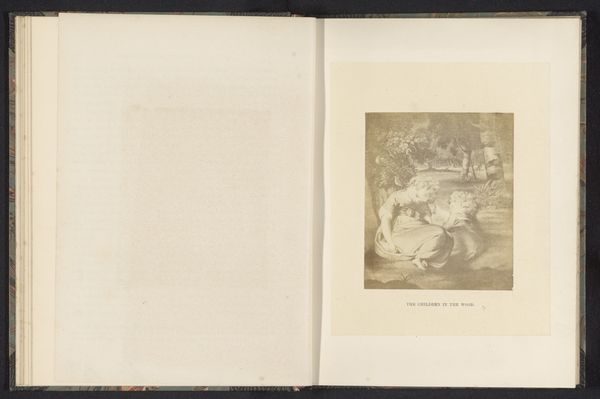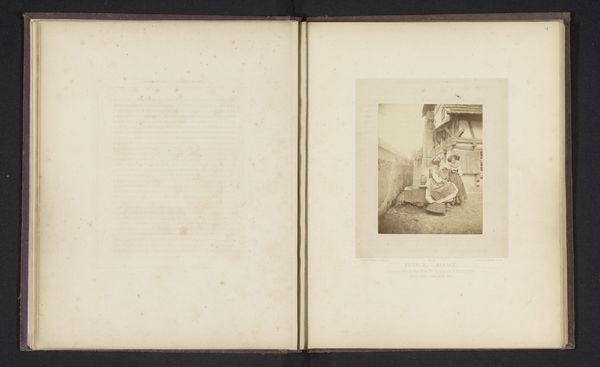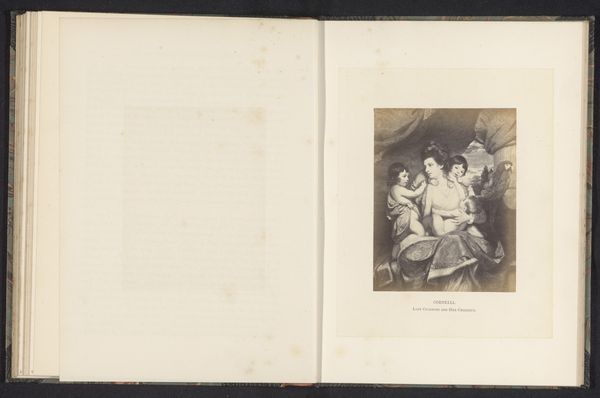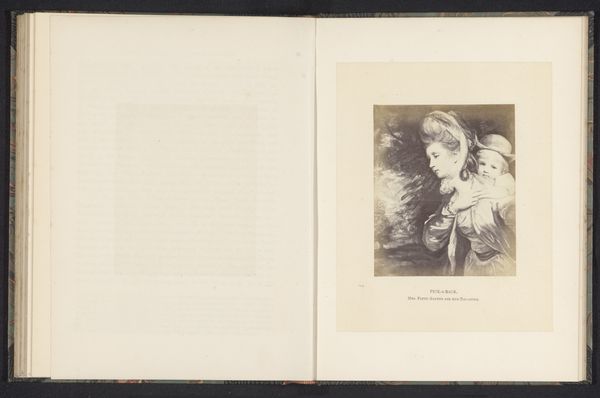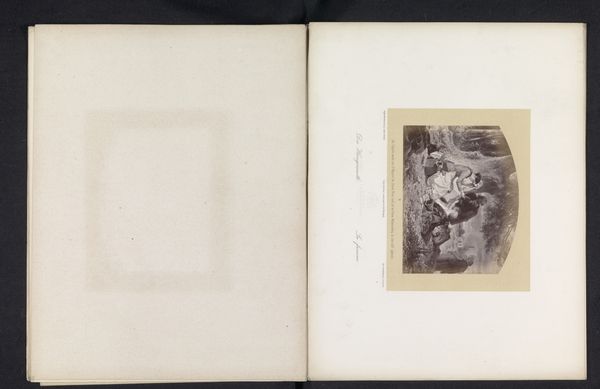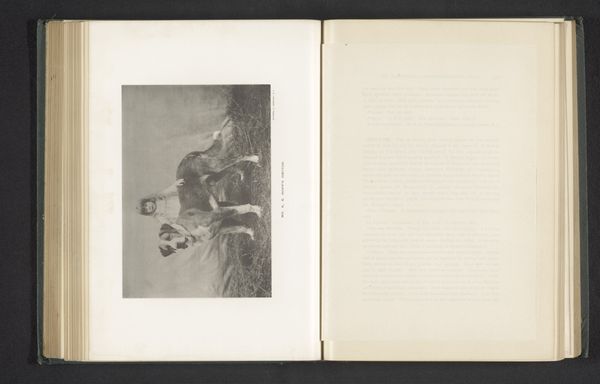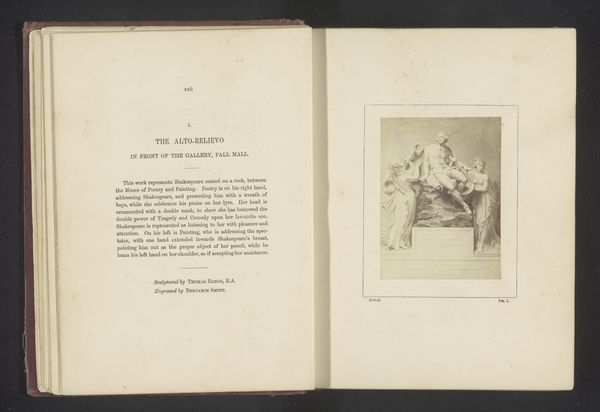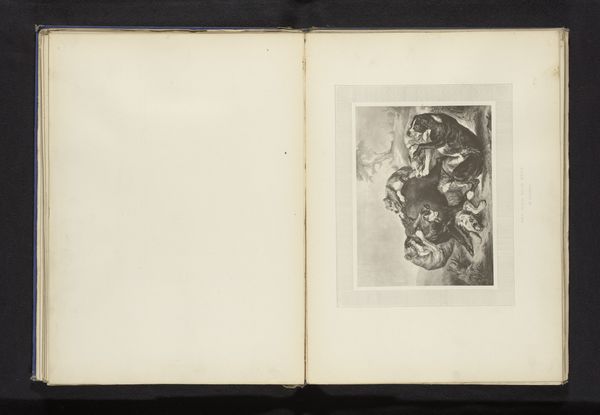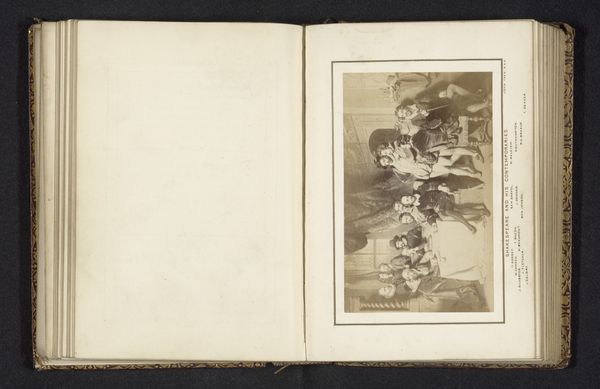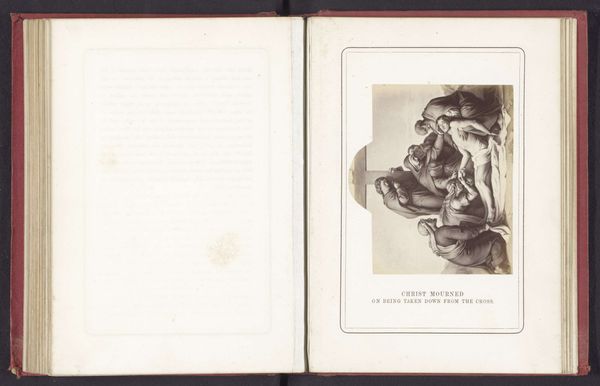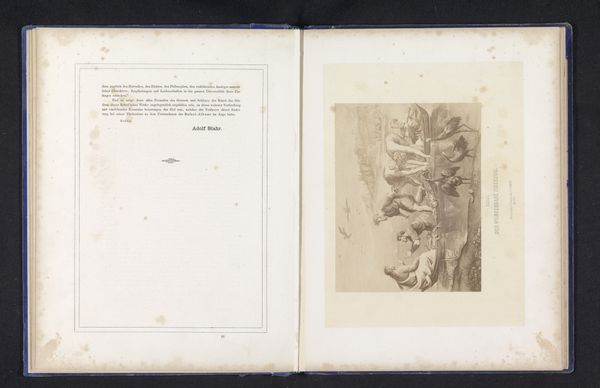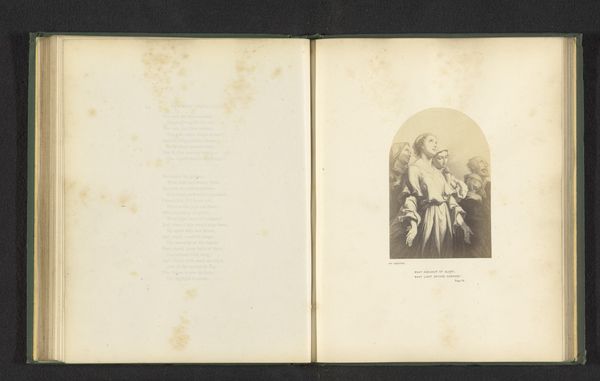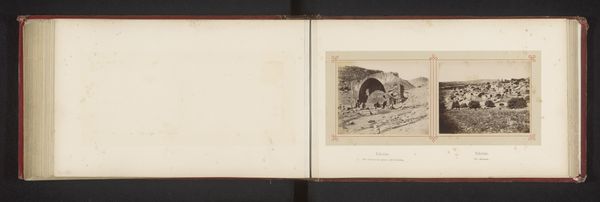
Fotoreproductie van een schilderij van vijf engelenhoofden door Joshua Reynolds before 1867
0:00
0:00
Dimensions: height 130 mm, width 101 mm
Copyright: Rijks Museum: Open Domain
Curator: Before us, we have a photogravure, "Fotoreproductie van een schilderij van vijf engelenhoofden door Joshua Reynolds," credited to A & E. Seeley, dating before 1867. What are your immediate impressions? Editor: Ethereal and haunting. There's a striking blend of sweetness and melancholy in those faces. The monochromatic palette lends an old-world, almost ghostly, feel. I'm drawn to the child's direct gaze. Curator: Reynolds’ original painting became iconic, influencing portrayals of innocence throughout the Victorian era. Prints like this made fine art accessible to a wider audience. How does the medium shape our understanding? Editor: The photograph flattens the painting, emphasizing its constructed nature. The angel figure takes on a new resonance within social constructions around religion. These types of angelic forms could be connected to different ideals. Are they icons of virtue or expressions of idealized white femininity? Curator: Precisely. Examining the societal roles imposed on women in the 19th century helps us unpack the popularity of this image. Academic art often reinforced these gendered expectations. What of the children here? How did Victorians regard children and what roles might that of played in making this art a must-have in so many households? Editor: The children's expressions contribute to the complexity. The primary angel has a defiant look. They are far from helpless cherubs. Considering the era’s evolving child labor debates and challenges to idealized family structures adds nuance to their representation. We might examine the socio-economic realities of the population reflected or unreflected in popular painting of the time, the construction of morality and virtue in an era of industrialization. Curator: Indeed, understanding that dynamic context challenges sentimental readings. The photographic reproduction transforms this work into both an aesthetic object and a cultural document that reflects Victorian anxieties. Editor: Absolutely. It becomes a lens through which we can interrogate issues of class, gender, and even the commodification of sentiment in that period. Curator: Ultimately, engaging with the photograph in its socio-historical and material contexts provides rich ground for meaningful reflection on art’s enduring cultural impact. Editor: These angel faces draw out tensions about how we read our values and cultural politics through art—forcing us to question if visual forms from the past necessarily serve contemporary ideas about social progress and ethics.
Comments
No comments
Be the first to comment and join the conversation on the ultimate creative platform.
